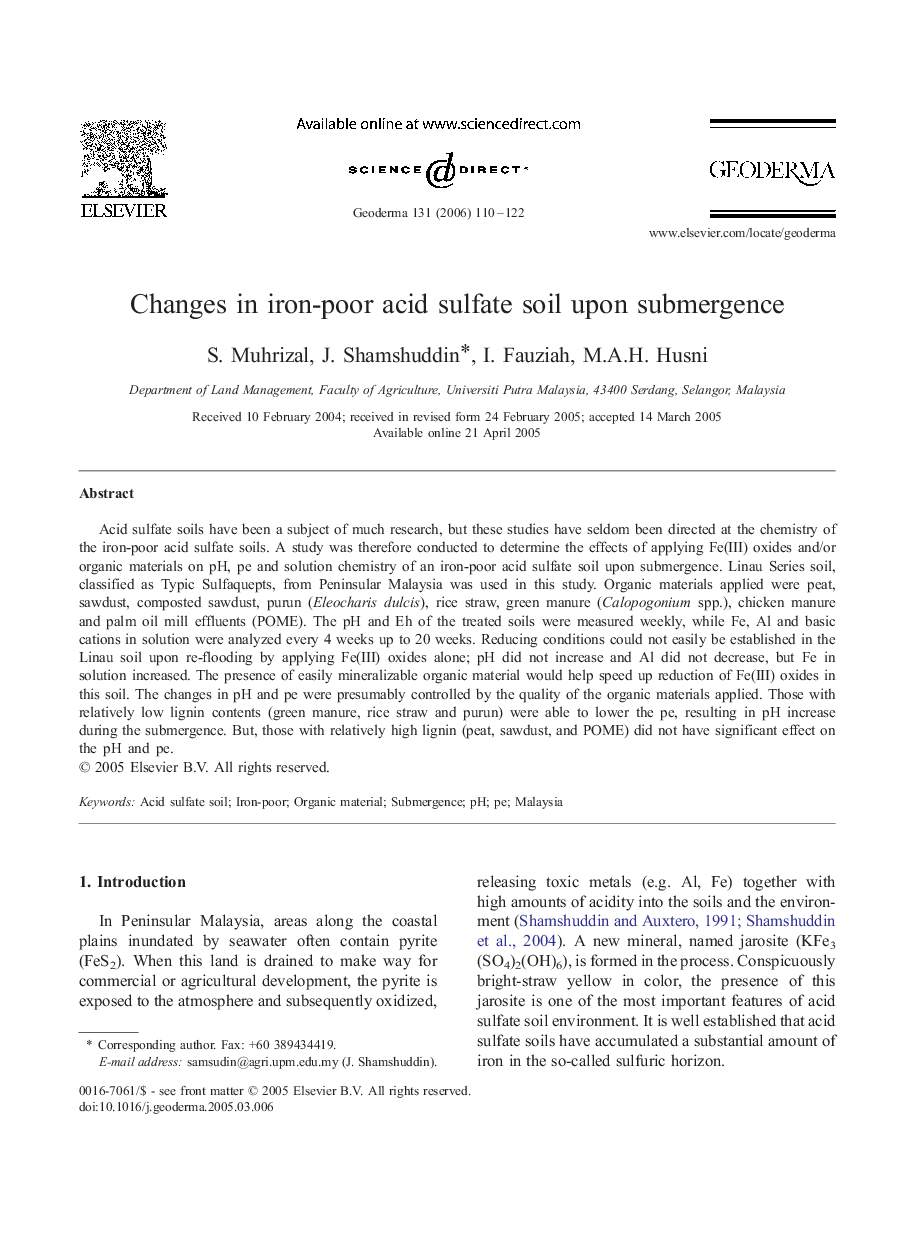| Article ID | Journal | Published Year | Pages | File Type |
|---|---|---|---|---|
| 4575689 | Geoderma | 2006 | 13 Pages |
Acid sulfate soils have been a subject of much research, but these studies have seldom been directed at the chemistry of the iron-poor acid sulfate soils. A study was therefore conducted to determine the effects of applying Fe(III) oxides and/or organic materials on pH, pe and solution chemistry of an iron-poor acid sulfate soil upon submergence. Linau Series soil, classified as Typic Sulfaquepts, from Peninsular Malaysia was used in this study. Organic materials applied were peat, sawdust, composted sawdust, purun (Eleocharis dulcis), rice straw, green manure (Calopogonium spp.), chicken manure and palm oil mill effluents (POME). The pH and Eh of the treated soils were measured weekly, while Fe, Al and basic cations in solution were analyzed every 4 weeks up to 20 weeks. Reducing conditions could not easily be established in the Linau soil upon re-flooding by applying Fe(III) oxides alone; pH did not increase and Al did not decrease, but Fe in solution increased. The presence of easily mineralizable organic material would help speed up reduction of Fe(III) oxides in this soil. The changes in pH and pe were presumably controlled by the quality of the organic materials applied. Those with relatively low lignin contents (green manure, rice straw and purun) were able to lower the pe, resulting in pH increase during the submergence. But, those with relatively high lignin (peat, sawdust, and POME) did not have significant effect on the pH and pe.
